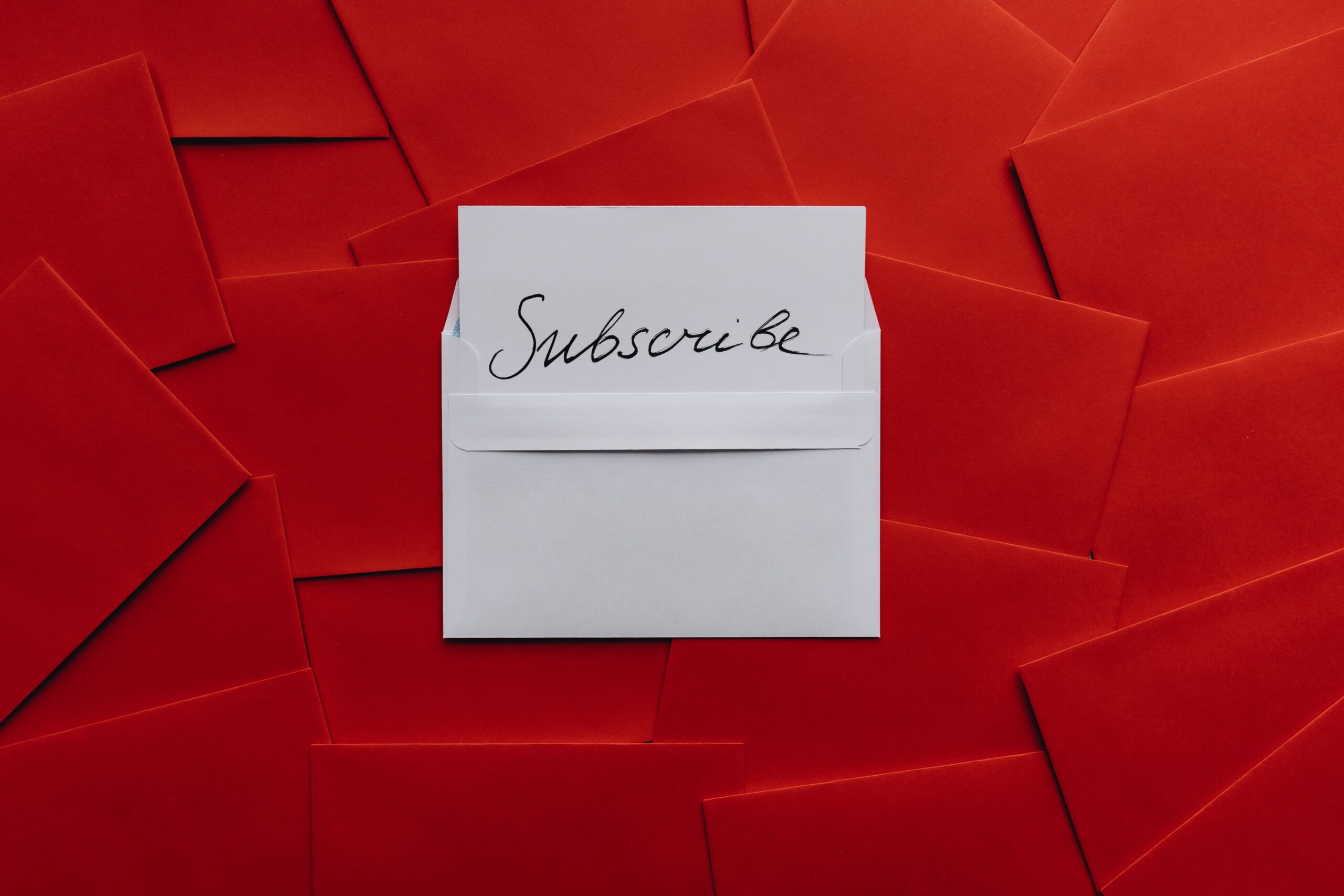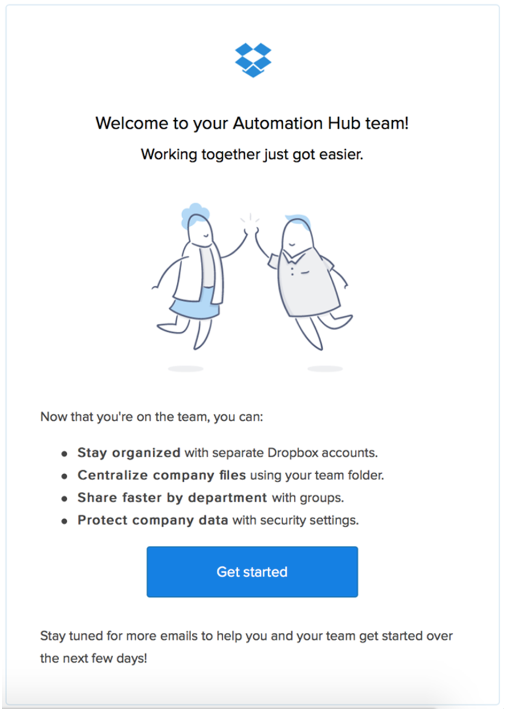Welcome to the world of email marketing, where first impressions often set the tone for your relationship with new subscribers! This article demystifies crafting an impactful welcome email, from compelling copy to continuous engagement strategies. How do you transform that welcome into a journey that leads your subscribers and clients deeper into your brand’s embrace?
Whether you’re a newbie in email marketing or looking to refine your approach, we’ll guide you from a simple greeting to building a lasting digital connection. Let’s dive in!
Understanding the Welcome Email: What Is It?
A welcome email is the first message subscribers receive after joining a mailing list. Its primary purpose is to acknowledge and validate their subscription, introduce them to the brand, and set expectations for future communications. It serves as a digital handshake, initiating the start of a mutually beneficial relationship. It’s a platform for brands to express gratitude, showcasing their unique voice and personality right from the outset.
Importance of Welcome Emails in Email Marketing
Welcome emails play a pivotal role in email marketing. They set the tone for the subscriber’s relationship with the brand and often enjoy higher open and click-through rates than regular newsletters. Furthermore, they act as a key trust-building tool, creating a foundation of credibility and authenticity. A well-crafted welcome email is the first step towards cultivating a loyal subscriber base, making it indispensable in any email marketing strategy.
Benefits of Sending a Welcome Email to New Subscribers
Sending a welcome email has multiple advantages. It confirms the subscription, makes subscribers feel valued, offers immediate engagement, and often drives initial purchases or actions. Beyond this, it provides a unique opportunity for brands to showcase their value proposition, giving subscribers a taste of what’s to come. This early interaction can set the trajectory for heightened brand loyalty, especially when the subscriber’s initiation into the brand is marked with positive reinforcement.
When it comes to welcome emails, the statistics speak for themselves. The average email open rate for businesses across all industries is 19.7%, while the welcome email open rate is 68.6%. This highlights the significance of welcome emails and the importance of crafting them in a way that provides a warm welcome and encourages your fresh subscribers to take action.

Key Components and Elements of a Successful Welcome Email
A successful welcome email contains a friendly greeting, a clear brand message, valuable content or offers, and a call-to-action. It also establishes what subscribers can expect in terms of content frequency and type in the future. Additionally, considering the visual appeal of the email is essential. Aligning the design with the brand’s aesthetics while ensuring user-friendly navigation can amplify the overall impact. A touch of personalization, whether it’s through addressing the subscriber’s name or tailoring content based on prior interactions, can further elevate the experience, making the welcome email truly memorable.
Crafting Effective Copy for a Welcome Email
Crafting the perfect welcome email begins with establishing a strong subject line that captures attention instantly. A subscriber’s inbox can often resemble a bustling marketplace, each brand vying for a moment of their attention. Remember, your subject line is your first impression in the vast sea of emails. It’s your beacon, drawing them into the world of your brand.
Once your subscriber opens the email, they should be met with a personalized greeting and introduction. This shouldn’t be a generic hello but rather a message that resonates, speaking directly to them and acknowledging their unique identity and preferences. This tailored touch makes the communication feel more genuine, showing your subscribers that they aren’t just another number on a list.
Introducing Your Brand
But it’s not just about saying hello. Your welcome email serves as an introduction to your brand’s universe. It should immediately communicate your brand’s value, laying out what the subscriber can expect regarding content, offers, and frequency. By being transparent and genuine, you not only set clear expectations but also reinforce the very reasons why they chose to engage with your brand to begin with. For instance: “Every week, we’ll share with you tips and tricks that we’ve gathered just for passionate gardeners like you.”
Effective welcome emails often employ persuasive language and storytelling techniques. It’s not enough to simply list out benefits or features. It’s all about creating an engaging brand story, weaving tales of how your brand came to be, the challenges faced, and the values that drive it. Ensure you set a strong brand narrative that resonates. By sharing a glimpse of your brand’s journey or its core ethos, you create a memorable experience. This narrative touch provides context, building a deeper connection and making your brand memorable right from the initial interaction. You can weave in a brief origin story or the mission behind your brand, for example: “Did you know our store started in a small garage in Brooklyn?”

More Ideas: Engage, Reward, Entertain
Your welcome email could end with an engagement-driven touch. This could be a call-to-action, inviting customers to explore a newly launched product, encouraging purchase with a special discount, or simply guiding them to learn more about your offerings. Your initial email sets the foundation, and by engaging your new subscribers early on, you’re paving the way for a symbiotic relationship that thrives on mutual value and understanding in the days to come.
You can also encourage immediate engagement by catering to their preferences, for example: “Take a minute to tell us your favorite genres, and we’ll tailor our recommendations just for you.” Everyone loves gifts and offers; this special way to welcome them to your mailing list can sweeten the deal. For example: “To celebrate you joining our family, here’s 10% off your next purchase.”
Word-of-mouth marketing is known for being a successful tool to promote your business. You can showcase a couple of testimonials in your initial email to prove how good a move it was to join the mailing list. A quote or two from satisfied customers can establish trust right from the outset, for example: “Sarah from Texas said, ‘This newsletter has transformed my morning routine.”
You can end your email by leaving the door open. For instance, add the sentence “Do you have questions, feedback, or just want to chat? We’re always here for you.” to the end part of your email. This is how you show that you care and are always ready to listen to your subscribers’ questions, concerns, and joys. Finally, there’s the “P.S. magic.” Often, P.S. is a widely read part in different forms of content, as it attracts attention and is mostly short and exciting. Use it to highlight a fun fact, tease upcoming news, or share an insider tip.
Design and Visual Elements
When creating a welcome email, choosing an attractive template and layout is paramount. It’s not just about aesthetics; it’s about functionality. In today’s digital age, optimizing for mobile devices and ensuring a clear mobile view is essential. A responsive design that appears seamlessly across all screens, whether it’s a desktop monitor or a smartphone display, is non-negotiable. But beyond these technicalities, the soul of your brand should shine through. Incorporate distinct brand elements and visuals to provide your subscribers with a consistent and recognizable touchpoint.
Additionally, typography plays an understated yet pivotal role. Clear and concise typography, coupled with well-thought-out formatting, can guide the reader’s eyes and make your content more digestible, especially when viewed on mobile devices. Lastly, striking a balance between text and visuals is key. It ensures not only readability but also engages the reader, making them eager to delve deeper into what you offer.
Building on this, the choice of imagery and color palette can evoke specific emotions in your readers, nudging them closer to the action you desire. Colors are more than just eye candy; they have the power to communicate and influence decision-making. For instance, cooler shades might exude trust and professionalism, while warmer tones can ignite passion and excitement. Moreover, personalization is not to be overlooked. A touch of customization, like addressing the subscriber by their first name or tailoring content based on their preferences, can significantly elevate the user experience, especially in the mobile view. As the digital landscape evolves, it’s vital to stay updated with the latest design trends, ensuring that your welcome email stays relevant and continues to capture attention and foster meaningful connections.
Building a Working Funnel
Constructing a robust funnel is vital. It begins with mapping out the customer’s journey, starting from the welcome email and leading up to conversion. For this journey to be successful, it’s imperative to set clear goals and objectives for each stage of the funnel. This isn’t just about the initial welcome but may extend to creating a series of follow-up emails aimed at nurturing and keeping your subscribers engaged. To enhance this process further, one must implement effective segmentation and personalization strategies to cater to the varied needs and preferences of each subscriber. And, of course, the funnel’s effectiveness isn’t just a set-and-forget affair. Regularly tracking and analyzing key metrics is crucial to understanding and measuring how well your funnel performs, ensuring that you’re always optimizing for the best possible results.

The dynamism of email marketing cannot be overlooked. As the digital landscape evolves, so do the preferences and behaviors of subscribers. Being attuned to these shifts is not merely beneficial – it’s essential. Beyond the technicalities of segmentation and tracking, the ability to humanize your approach often sets successful marketers apart. Remember, at the other end of that funnel is a real person with emotions, needs, and aspirations. By consistently delivering value and resonating with your audience on a genuine level, you solidify trust, fostering conversions and lasting relationships. It’s this blend of strategy and authenticity that will elevate your email marketing journey in the long run.
Funnel Building Action Plan Example: Short and Simple!
1. Identify Your Objective: Define the main goal of your welcome emails (e.g., brand introduction, promotion awareness, user activation).
2. Segment Your Audience: Understand who you’re targeting. New subscribers? First-time buyers? Tailor your message accordingly.
3. Craft Your Content (the number and sequence of emails below is an example; the right choice depends on your brand and services offered):
- Email 1: Send thanks for the subscription or sign-up, and provide an offer or discount if applicable.
- Email 2: Introduce your brand, story, or mission.
- Email 3: Highlight key products, services, or features.
- Email 4: Share valuable resources, blog posts, or user guides.
4. Design Your Emails: Ensure brand consistency, utilize visual elements, and make them mobile-friendly.
5. Implement Personalization: Address the subscriber by name and customize content based on their interests or actions.
6. Set Timing and Frequency: Space your emails appropriately. Consider sending the first immediately after sign-up and then spacing others 1-3 days apart. Be mindful that sending too much can cause unsubscribes.
7. Include Clear CTAs: Every email should have a clear and compelling call-to-action, guiding the subscriber on what to do next.
8. Test and Optimize: Before fully automating, test different subject lines, content, and sending times to determine what resonates best.
9. Monitor and Adjust: Regularly review performance metrics, like open rates and click-through rates, to refine your funnel over time.
10. Encourage Progression: As subscribers move through the welcome funnel, transition them to other relevant email campaigns to continue the relationship.
Remember, the key to a successful welcome email funnel is to build a genuine relationship with your subscriber, offering real value at every stage.
Best Practices and Tips
1. Stay Short and Concise: Lengthy emails can overwhelm new subscribers. Keep your welcome emails crisp and concise to ensure the reader remains engaged. Remember, brevity can be a breath of fresh air in a world inundated with information. Use compelling language that directly addresses the reader’s needs, and avoid unnecessary jargon that might clutter your message.
2. A/B Testing is Crucial: Before finalizing your welcome email, conduct A/B tests on various elements like good subject lines, copy, and design. This helps in determining which version resonates most with your audience. It’s worth noting that sometimes, even subtle changes can yield significant differences in engagement. Consistent testing refines your strategy and hones in on what truly appeals to your target demographic.

3. Embrace Automation: Streamline your process by automating welcome email sequences. This not only saves time but also ensures consistency and efficiency in reaching out to every new subscriber. Moreover, automation allows you to segment your audience and deliver tailored messages at optimal times, enhancing the probability of your email being opened and read.
“Tip for timing: 74% of people of people expect an instant welcome email when ordering from a brand.”
4. Personalize Your Content: Every subscriber is unique. Tailor your emails based on individual preferences and actions. Personal touches can drastically improve engagement rates. By leveraging data and insights about your subscribers, you can create messages that feel custom-made, fostering a deeper connection and making them feel valued.
5. Provide Value Upfront: Enhance your welcome email by including pertinent resources, exclusive offers, or incentives. This can encourage further interaction and loyalty from the get-go. When a subscriber sees immediate benefits in your email, they’re more likely to perceive your brand as one that offers genuine value, setting the stage for a long-term relationship.
Case Studies and Examples
Examining real-life successes is beneficial. Drawing from the email marketing playbook of global brands, we’ll check out the welcome emails of giants like Patagonia, Asos, and Dropbox. These brands have perfected the art of the welcome email, making each a masterclass in engagement and brand storytelling.
By understanding the underpinnings of these successful strategies, we can draw actionable insights to guide your welcome email journey. So, let’s pull back the curtain and uncover the secrets behind the world’s best welcome email campaigns.
Patagonia
The Patagonia welcome email is a prime example of how to greet new subscribers warmly. One of the standout elements of this email is its welcoming tone, which immediately establishes a sense of warmth, inclusivity, and community. The carefully chosen visual elements of the email further enhance the brand’s ethos, showcasing the outdoor and adventurous spirit that Patagonia embodies. In essence, Patagonia’s welcome email is a masterclass in combining warm, welcoming text with brand-consistent visuals to create an immediate connection with new subscribers.
Q: What is the essence that makes this email work?
Brand character and message: Besides a welcoming tone that sets a feeling of community and a distinctive visual style, the email also features an image of the people creating Patagonia clothing, which brings the customer closer to the brand in a human dimension. As an important additional aspect, they highlight environmental topics that are important to the brand (and their subscribers) as a part of their mission.

Asos
On the other hand, Asos, a fashion e-commerce giant, emphasizes the latest trends, exclusive offers, and its broad product range. They utilize vibrant imagery (GIF-s included) coupled with concise copy, ensuring the reader’s attention is immediately captured. Their focus on exclusive offers and benefits for new subscribers also fosters an immediate sense of value.
Q: How did they resonate so well with their audience?
Freshness and skillful targeting: While they highlight exclusive offers and new arrivals, Asos also promotes a wide range of sizes, styles, and brands, ensuring there’s something for everyone, thus resonating with a broad audience. Asos’ social media accounts also have an important place in the email, as by following them, the company’s more fashion-conscious and social media-oriented followers can keep up to date with new trends in street fashion. It should also be noted that to join the Asos mailing list, people must first have an account created on the Asos webpage. This step also keeps the Asos mailing list cleaner, as it ensures that those who join it are genuinely interested in the goods sold on Asos and the content offered by the company.
Dropbox
Dropbox, a cloud storage solution, approaches its welcome emails with simplicity and clarity. By focusing on easy onboarding and emphasizing the benefits of their service, they ensure users understand the value proposition and are guided toward using the platform optimally.
Q: Did they utilize emotional appeal, humor, or sheer utility?
Sheer Utility: Dropbox’s primary appeal in its emails is the promise of easy, accessible, and secure cloud storage. Their communication leans heavily on the utility aspect, underscoring how their service can simplify and enhance the user’s digital life. This welcome email is a perfect illustration of Da Vinci’s quote on simplicity being the ultimate sophistication, so if it suits your offered service, you can fill your email canvas with a similarly simple and short hello.

Final Thoughts on the ABC of Welcome Email
It’s evident that welcome emails hold a pivotal role in the realm of email marketing. The potency of an effective copy paired with a seamlessly working funnel cannot be understated. These elements create a lasting first impression and lay the foundation for a prosperous relationship with subscribers. We strongly urge readers to take the strategies discussed to heart and integrate them into their campaigns for a notable boost in email marketing performance. Let the power of a well-crafted welcome email propel your brand to new heights.
About the Co-Author
Bryan Carrillo is a seasoned email marketing expert with over a decade of experience in the digital realm. Passionate about the art of communication, he has helped numerous brands elevate their engagement through compelling copy and strategic funnels.

